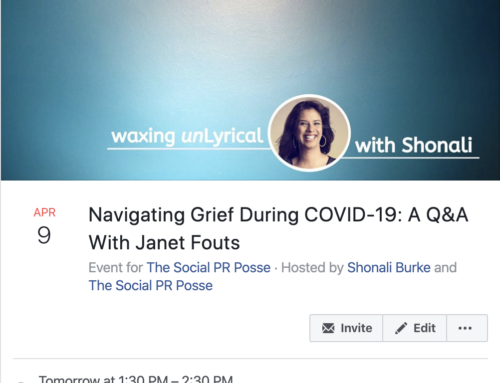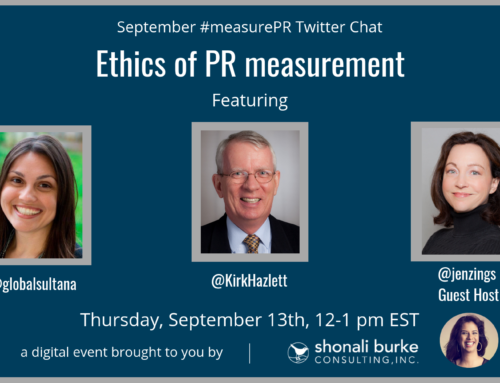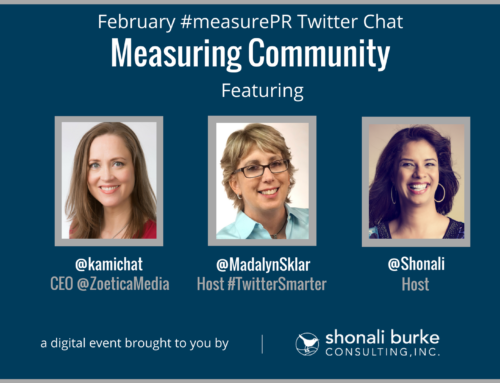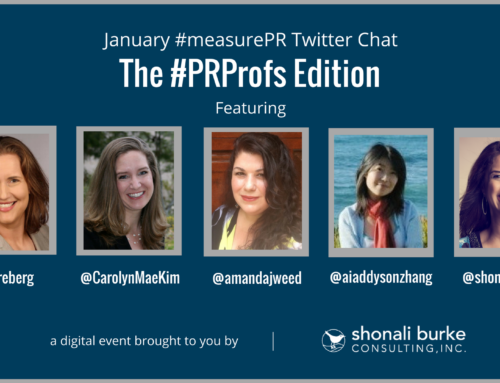 In a few days I’ll be Westward-bound; one of several hundred (or is it thousand?) PR and communication professionals converging on San Diego for PRSA’s 2009 International Conference (that’s me on Coronado Beach a couple years ago). My first experience of PRSA’s annual shindig was last year, when I was lucky enough to co-present with Katie Paine on measurement in Detroit.
In a few days I’ll be Westward-bound; one of several hundred (or is it thousand?) PR and communication professionals converging on San Diego for PRSA’s 2009 International Conference (that’s me on Coronado Beach a couple years ago). My first experience of PRSA’s annual shindig was last year, when I was lucky enough to co-present with Katie Paine on measurement in Detroit.
The entire experience was a blast, and it will also live forever in my memory because that’s where I first met the beauteous and brilliant Shannon Paul and Lauren Vargas, caught up with the dynamite Kami Watson Huyse, first encountered Jason Falls, and was dissed (and defended, thank you Kami!) at my first tweetup. Ah, the good old days.
This year I’m lucky enough to have been selected by PRSA as a solo speaker and will be presenting on measurement on November 9 (here’s an interview I did to promo it a while back). If you’re attending the conference, do come by.
But more than plug my session, I want to pick your brains.
See, the thing is, my take on measurement is very simple (and yes, has been strongly influenced by the afore-referenced Sashet, the Measurement Goddess, aka Katie Paine).
You start at the end – what are your measurable objectives? And by “measurable,” I mean quantifiable and time-bound, not “increase buzz” or some crap like that.
You focus on what outcomes you’d like to achieve, not just outputs (like media impressions) and, if possible (because usually this takes some budget dollars), outtakes as well. A lot has been written about these recently, but I believe in going to the source, so here’s a great dictionary from the Institute for Public Relations (you should bookmark this).
And then you map out your strategy and tactics, track everything along the way, and then analyze the results of your program, based on what you were trying to achieve in the first place.
I like to use a couple of case studies, showing how this has been done both with “traditional” and social media, sometimes on a very tiny budget.
I show how, at my last job, we patiently tracked our communications against organizational key performance indicators, and how we were able to calculate – using a formula that was given to us by the equivalent of the marketing department – the value we added to the organization’s bottom line.
And I will tell you to stay away from ad value equivalency or AVE, which I hear IPR’s Measurement Commission recently voted down as a no-no when it comes to PR measurement.
My presentation’s probably not going to be earth-shattering for anyone (and I kinda hope it won’t, because the measurement debate’s been going on long enough).
What I hope it will be is engaging, and show practitioners who might be overwhelmed by all the jargon out there that measurement is not necessarily tough, mind-blowingly expensive, or tedious… and how to get started, or get back on the right track.
Looking for the Wisdom of Crowds
Here’s my question to you: are there any other questions you think I need to address? What else can I add to my presentation so that attendees can walk away with tips and ideas they can really use?
I can’t promise I can answer all of them, but I’ll try; if I can’t, I’ll try to find resources who can. Or, do you have tips I can include?
The bottom line is, I want the presentation to be about you, not me. So I’m asking you to help me deliver the content that will be most useful to you. I’m sure I can go it myself, but it’ll be so much more fun this way.
I’d very much appreciate your thoughts and feedback; just send me a tweet, or leave a comment below. I promise to give credit where credit’s due, and will be uploading it to SlideShare so that you can all see it.
Thank you!








[…] found it neat that the discussion moved from beating up on AVEs (which, don’t get me wrong, I’m always happy to do) to really starting to look at the […]
[…] found it neat that the discussion moved from beating up on AVEs (which, don’t get me wrong, I’m always happy to do) to really starting to look at the […]
[…] all began when I met Mary Barber at the 2009 PRSA International Conference. Mary and I had corresponded on Twitter (is it weird to use that word in conjunction with Twitter? […]
[…] write and speak often on this but really… why are we still going round and round in circles about something like […]
[…] write (you may have to log in to read this op-ed I wrote in PRWeek earlier this year) and present often on measurement in public relations, because that’s my field. But measurement itself is […]
Can’t wait to see you!
Question to consider:
1. What’s the most cost-effective way to track and analyze results?
2. How do you compel an employer/client to use your measurement factors, when they are insisting on AVE?
3. How often – and for how long – should you stop and take the time to reflect/measure?
Love ’em, Jen. Thank you!
Aw, shucks! I felt privileged to finally engage in F2F conversation with you for the first time last year!
Don’t sell yourself short on your presentation…I think it will be earth shattering for some because there are so many people who still don’t understand what a measurable objective is, how to write one or how to deliver an outcome versus outtake or output.
Thanks, Lauren! I’ll slip you the $10 later. ;-) Seriously, though – thank you, I appreciate the vote of confidence and very much hope this will be helpful to folks.
[…] This post was mentioned on Twitter by Shonali Burke, Shonali Burke, Jeff Crites, HiroBoga, Jennifer Wilbur and others. Jennifer Wilbur said: Help @shonali prepare for #prsa09 by giving your $0.02 (or more) on her post "Sun, sand & measurement): http://tr.im/E3rg. Tx! #fb […]
Ahh, I think the proverbial elephant in the closet is how can you measure the intangible values of PR, such as counsel, partnership building? Knock ’em dead in San Diego! I’ll be rooting you on.
Thanks, Robert! These are great questions and I’ll add them to my list. See you soon!
Hi Shonali:
This is a timely post given a conversation I had the other day. I’m finishing up a search for a Communications Director role and during a reference discussion, a person speaking on behalf of a candidate made a very interesting comment when I asked how this candidate’s contributions have produced measurable results. The reference responded with the “we use traditional measurement tools — hits, etc.” comment but then talked about the challenge of measuring the impact/value of the “story that got away.”
I’d appreciate hearing about how one measures a communicator’s track record when they are highly effective “story-killers” . . . when part of their role is to protect, defend, and bolster corporate reputation by what wasn’t said, not by their response to something that was. Is this measurable at all or is there a way to communicate this internally that will ensure the communicator receives appropriate acknowledgment for his/her valuable contribution.
Thanks and enjoy the conference!
ssm
Susan, thanks so much for this great question. I think it’ll be very interesting to pose some of these questions to attendees. My initial thoughts are yes, you can absolutely measure this. If you’re already tracking conversations, then when you’re NOT in them… you’re doing something right. Then correlate the outputs to actual outcomes and your KPIs; e.g. if a negative story on your organization runs, how does it impact things like traffic, donations, calls from “angry” members/audience, etc.
I once had to deal with a situation where a reporter spent over a year researching a story on an organization and it became clear this person was looking more for the negative than the positive. When the story finally ran, it was definitely on the negative side rather than the positive. But we’d reached to the key constituents ahead of time to reassure them in case they had questions following the story, including staff (which is a very important audience that sometimes are not accounted for as much as external audiences).
The net-net was that not only did it not impact the organization negatively, it even received a donation from someone who felt bad after reading the story! So yes – it’s absolutely measurable; it’s just a question of identifying how you’re going to measure it and it always needs to come back to what will impact the organization the most.
Shonali, good luck in San Diego. I implore you to devote just a few minutes of your talk to internal communication measurement. Take the audience from output measures (intranet traffic metrics) to outtakes (downloads of material, use of electronic forms) to outcomes (lower turnover, cost savings, engagement, increased sales (or stable sales), reduced help desk traffic, etc.).
Wish I were going!
Cheers for now,
Sean
Sean, that is a GREAT idea, thank you! Do you have a couple of slides you’d be willing to share (with full credit, of course), since I’d love to show them something visual?